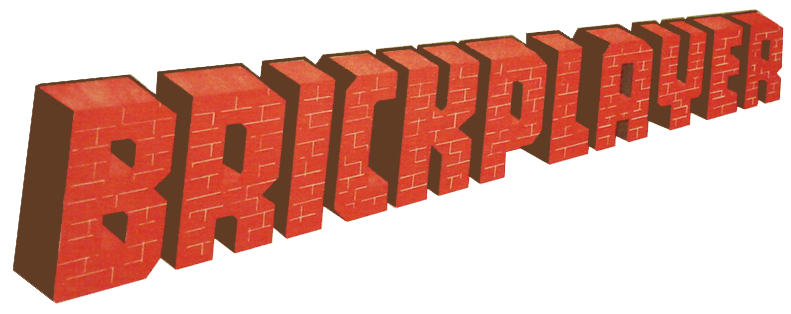






An obvious first step is to check that you have all the components needed for your chosen model. (Recommendations if you are missing some components can be found here.) Then the instructions in the booklet will guide you through the process of building it. However, I have just a few pieces of advice for you.
Glue. Brickplayer kits came with a bag of "cement", but you will be lucky if you have such a bag with contents that are still usable. They also came with a tube of "roofing cement" which is almost certain to be no longer usable. Fortunately, there are modern alternatives that are readily available and better.
Instead of the old "cement", I use washable PVA glue, sometimes called school glue. It is readily available and cheap. Like the original Brickplayer "cement", it has the important property that it sticks the bricks together firmly and creates solid models, but if you later immerse the model in warm water it will come apart. You can then reuse your bricks to make another model (but be sure to clean the glue residue off them first). I use washable PVA for gluing both bricks and windows/doors. I apply it using a small artist's paintbrush. (Be sure to clean the brush at the end of each building session.)
Instead of the "roofing cement", I use a simple contact adhesive to glue together pieces of roofing. This is permanent, of course, but it is anyway not practical to reuse roofing components.
Blueprints. If you have the blueprint for your model, this will be a great way to start your building. (If not, blueprints for all the models described in the various instruction books can be downloaded via the link to the appropriate era on the kits and history page.) The blueprint shows you exactly how to lay out your first course of bricks. The expectation is that you will use it by literally laying your first course out on the blueprint. However, unless you glue the bricks down they are liable to move and spoil the model, but if you do glue them down the blueprint will not be reusable.
My advice, then, is to use a copy. You can simply photocopy the original blueprint if you can ensure that the photocopy comes out exactly the same size. Otherwise, you can make a copy by tracing it on translucent paper (generally called tracing paper). When your model is complete, you can cut around the perimeter to remove the surplus paper.
Getting courses level. A bricklayer uses aids such as a spirit level and lengths of string to ensure that a wall is vertical and the courses are horizontal, and the same care is needed when building with Brickplayer. Putting a set square up against a wall is a useful aid to getting it vertical relative to the base. Ensuring the courses are level and horizontal, however, is a little more difficult. The bricklayer can use more or less mortar to deal with irregularities in the bricks, but this is not possible with Brickplayer. Bricks are glued together, so there is no gap between them, either horizontally or vertically. Doors and windows are made with width and height matching certain numbers of bricks, and thereby assume that there are no gaps in the brickwork. But Brickplayer bricks that are nominally of the same size may not be exactly the same height and length.
Adjusting for small variations in length is possible by leaving small gaps between adjacent bricks. The fact that they are not actually glued together is not important because they are glued to the bricks below and/or above, and small gaps will not be noticeable. But we cannot leave vertical gaps in the same way, so it is important to ensure that adjacent bricks are, as far as possible, exactly the same height. Even a small difference in height between two adjacent bricks will mean that when a brick is laid across them in the next course it will slope and cause increasing problems with successive courses.
I suggest that you lay out each course of bricks before gluing, and place a ruler along the top. Use a spirit level to check that the ruler is horizontal (first ensuring that your base is horizontal!). Check also that there are no gaps visible between the brickwork and the ruler before gluing them down. Any gaps will indicate a height discrepancy between adjacent bricks that needs to be addressed. Usually, it is a simple matter of replacing offending bricks. However, it may be necessary to reduce the height of a brick by the use of a file or coarse sandpaper. Fortunately, Brickplayer bricks can be filed or sanded down relatively easily.
Even after gluing a course of bricks down, there may be slight differences in height because of the way the glue has set. Once the course has set firmly (e.g. after a few hours) any remaining discrepancies can be sanded down. Be sure to brush away any brick dust before starting the next course.
The design stage is very much up to you. Decide what sort of building you want to create and start sketching how it would look. The designs in the instruction booklet can be a starting point, from which you develop your own variations. You might start with something not too different from those in the book, or you may feel confident to make something as big or elaborate as your imagination can conceive! You might get some inspiration from my projects page.
When it comes to turning your design into reality, you should still take note of the tips above about glue and making courses level. However, one new challenge comes in making a roof. Brickplayer kits come with roofing parts already cut out or else printed for you to cut out: the roof design page will help you to draw up patterns to construct roofs for your own models.

|

|

|

|

|

|